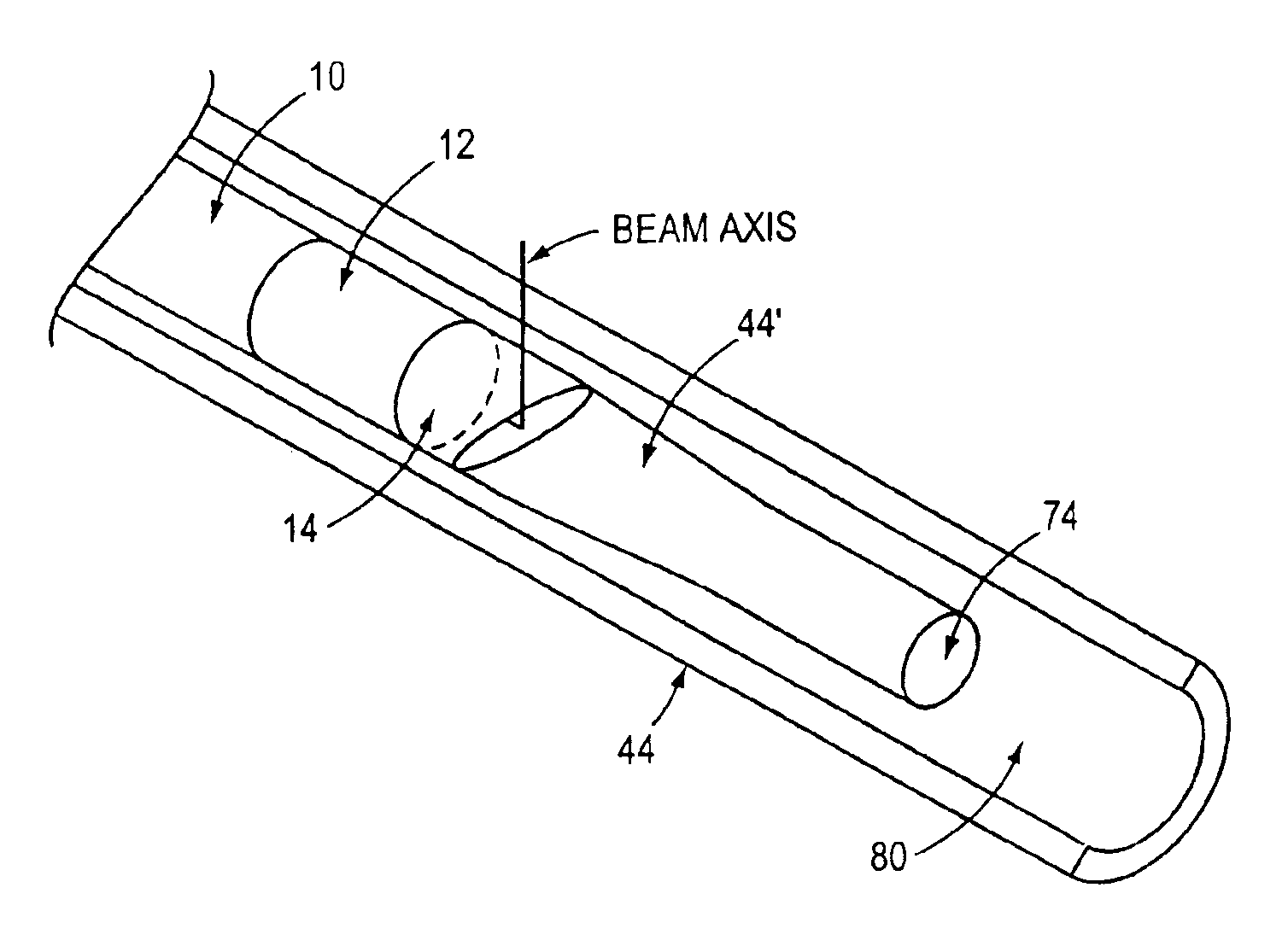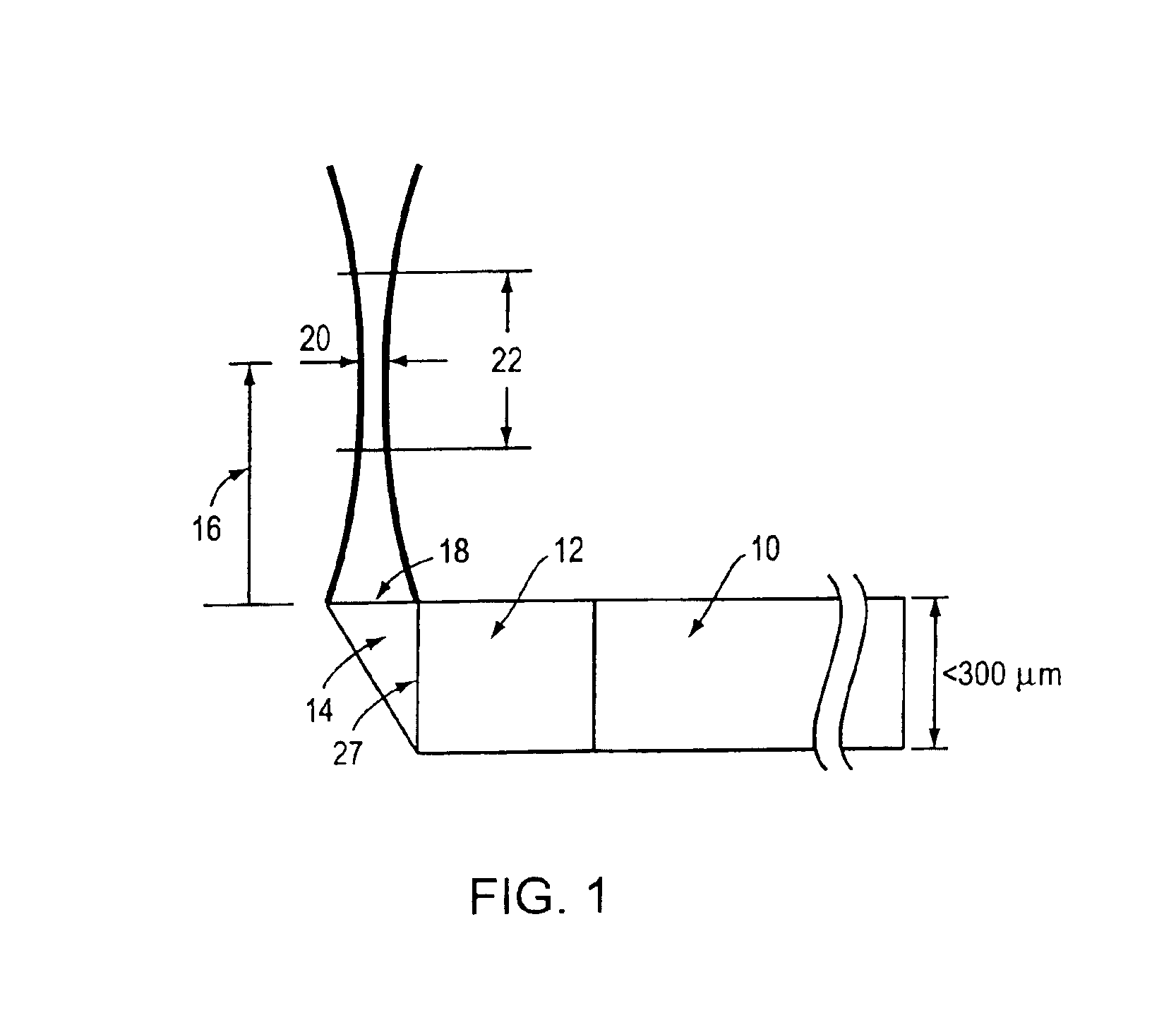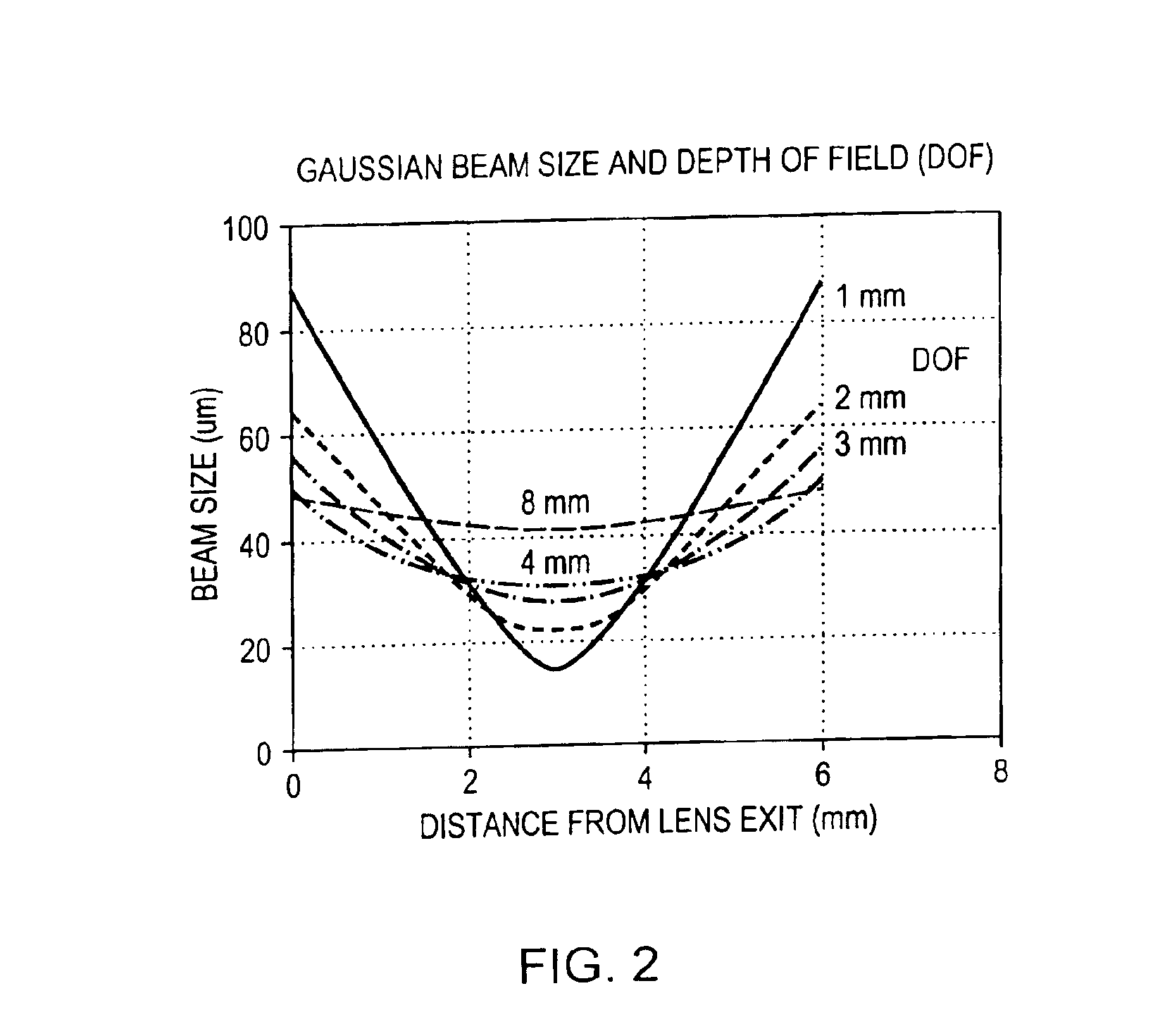Scanning miniature optical probes with optical distortion correction and rotational control
- Summary
- Abstract
- Description
- Claims
- Application Information
AI Technical Summary
Benefits of technology
Problems solved by technology
Method used
Image
Examples
Embodiment Construction
[0025]FIG. 1 shows an example of an embodiment of an imaging lens. In this embodiment a single-mode fiber 10 is spliced or otherwise secured to a lens 12. The lens 12 is approximately the same diameter as the fiber 10. The fiber 10 may include a variety of thin protective coatings. A beam director 14, a 45 (or other suitable angle) degree fold mirror in one embodiment, is affixed to the lens 12 using fusion splicing or glue. The fold mirror 14 is either coated with a high-reflectance material or operates according to the principle of total internal reflection.
[0026]Still referring to FIG. 1, in the embodiment shown, the lens 12 has a working distance 16 from the surface 18 of the fold mirror 14 to the waist location 20 of the Gaussian beam. The combination of the lens 12 and beam director 14 magnify (or reduce) the beam waist originally located at the exit of the single-mode fiber 10 and create a new waist 20 at the spot located at the working distance 16. At the working distance 16...
PUM
 Login to View More
Login to View More Abstract
Description
Claims
Application Information
 Login to View More
Login to View More - R&D
- Intellectual Property
- Life Sciences
- Materials
- Tech Scout
- Unparalleled Data Quality
- Higher Quality Content
- 60% Fewer Hallucinations
Browse by: Latest US Patents, China's latest patents, Technical Efficacy Thesaurus, Application Domain, Technology Topic, Popular Technical Reports.
© 2025 PatSnap. All rights reserved.Legal|Privacy policy|Modern Slavery Act Transparency Statement|Sitemap|About US| Contact US: help@patsnap.com



